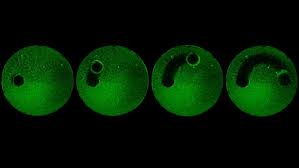
Breaking News
 2 Hours of Retro Sci-Fi Christmas Songs | Atomic-Age Christmas at a Snowy Ski Resort
2 Hours of Retro Sci-Fi Christmas Songs | Atomic-Age Christmas at a Snowy Ski Resort
 Alternative Ways to Buy Farmland
Alternative Ways to Buy Farmland
 LED lights are DEVASTATING our bodies, here's why | Redacted w Clayton Morris
LED lights are DEVASTATING our bodies, here's why | Redacted w Clayton Morris
Top Tech News
 Travel gadget promises to dry and iron your clothes – totally hands-free
Travel gadget promises to dry and iron your clothes – totally hands-free
 Perfect Aircrete, Kitchen Ingredients.
Perfect Aircrete, Kitchen Ingredients.
 Futuristic pixel-raising display lets you feel what's onscreen
Futuristic pixel-raising display lets you feel what's onscreen
 Cutting-Edge Facility Generates Pure Water and Hydrogen Fuel from Seawater for Mere Pennies
Cutting-Edge Facility Generates Pure Water and Hydrogen Fuel from Seawater for Mere Pennies
 This tiny dev board is packed with features for ambitious makers
This tiny dev board is packed with features for ambitious makers
 Scientists Discover Gel to Regrow Tooth Enamel
Scientists Discover Gel to Regrow Tooth Enamel
 Vitamin C and Dandelion Root Killing Cancer Cells -- as Former CDC Director Calls for COVID-19...
Vitamin C and Dandelion Root Killing Cancer Cells -- as Former CDC Director Calls for COVID-19...
 Galactic Brain: US firm plans space-based data centers, power grid to challenge China
Galactic Brain: US firm plans space-based data centers, power grid to challenge China
 A microbial cleanup for glyphosate just earned a patent. Here's why that matters
A microbial cleanup for glyphosate just earned a patent. Here's why that matters
 Japan Breaks Internet Speed Record with 5 Million Times Faster Data Transfer
Japan Breaks Internet Speed Record with 5 Million Times Faster Data Transfer
The future of dental cleaning? Biofilm-busting micro-robots impress in precision...

An army of tiny robots scuttling about inside your mouth cleaning your teeth. It's a disquieting thought, and yet it might be one of the most effective ways to deal with the sticky bacterial biofilms that coat our choppers – as well as water pipes, catheters and other tough-to-clean items.
Run your tongue around your teeth and enjoy the feeling of the biofilms that are pretty much always coating them. Biofilms are little communities of micro-organisms, bacterial and otherwise, that gather together, sticking their cell walls together and bonding themselves to surfaces in three-dimensional structures, scaffolded together with all sorts of claggy polymers. They've been described as little microbe cities, functioning as tiny co-ordinated communities.
They form all over the place – not just in our mouths as dental plaque, but on your dirty dishes, on rocks, in pipes, surgical equipment, anywhere liquid and microbes meet – and when bacteria gang up in these gloopy films, they can become far more resistant to antibiotics than usual.
And they're tough to break – hence why dentists have to spend so much time scraping away at plaque deposits on your teeth in a fiddly and uncomfortable process that's probably about as much fun for the dentist as it is for the patient.

 $100 SILVER CONFIRMED?
$100 SILVER CONFIRMED?

